A Guide to Improving the Care of Patients with Fragility Fractures, Edition 2
- PMID: 26246957
- PMCID: PMC4430408
- DOI: 10.1177/2151458515572697
A Guide to Improving the Care of Patients with Fragility Fractures, Edition 2
Abstract
Over the past 4 decades, much has been learned about the pathophysiology and treatment of osteoporosis, the prevention of fragility fractures, and the perioperative management of patients who have these debilitating injuries. However, the volume of published literature on this topic is staggering and far too voluminous for any clinician to review and synthesize by him or herself. This manuscript thoroughly summarizes the latest research on fragility fractures and provides the reader with valuable strategies to optimize the prevention and management of these devastating injuries. The information contained in this article will prove invaluable to any health care provider or health system administrator who is involved in the prevention and management of fragility hip fractures. As providers begin to gain a better understanding of the principles espoused in this article, it is our hope that they will be able to use this information to optimize the care they provide for elderly patients who are at risk of or who have osteoporotic fractures.
Keywords: foot and ankle surgery; fragility fractures; geriatric medicine; geriatric trauma; metabolic bone disorders; nonoperative spine; osteoporosis; systems of care; trauma surgery; upper extremity surgery.
Conflict of interest statement
Figures

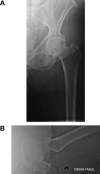



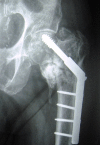
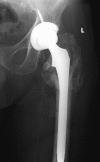


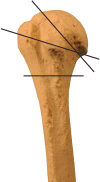

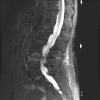
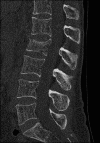
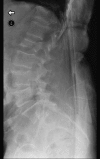
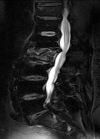

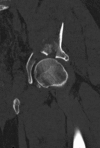

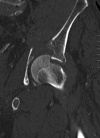
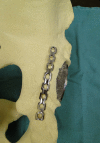
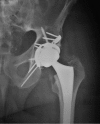


Similar articles
-
Incidence of bone protection and associated fragility injuries in patients with proximal femur fractures.Injury. 2017 Dec;48 Suppl 7:S27-S33. doi: 10.1016/j.injury.2017.08.035. Epub 2017 Aug 26. Injury. 2017. PMID: 28851521
-
Osteoporotic Hip and Spine Fractures: A Current Review.Geriatr Orthop Surg Rehabil. 2014 Dec;5(4):207-12. doi: 10.1177/2151458514548579. Geriatr Orthop Surg Rehabil. 2014. PMID: 26246944 Free PMC article.
-
Secondary prevention of osteoporosis following fragility fractures of the distal radius in a large health maintenance organization.Arch Osteoporos. 2016;11:20. doi: 10.1007/s11657-016-0275-2. Epub 2016 May 3. Arch Osteoporos. 2016. PMID: 27142832
-
Ankle fractures in the elderly: risks and management challenges.Orthop Res Rev. 2017 May 29;9:45-50. doi: 10.2147/ORR.S112684. eCollection 2017. Orthop Res Rev. 2017. PMID: 30774476 Free PMC article. Review.
-
Orthopedic Surgery and the Geriatric Patient.Clin Geriatr Med. 2019 Feb;35(1):65-92. doi: 10.1016/j.cger.2018.08.007. Epub 2018 Oct 11. Clin Geriatr Med. 2019. PMID: 30390985 Review.
Cited by
-
Analgesic regimens administered to older adults receiving skilled nursing facility care following hip fracture: a proof-of-concept federated analysis.BMC Geriatr. 2024 Oct 30;24(1):897. doi: 10.1186/s12877-024-05486-0. BMC Geriatr. 2024. PMID: 39478461 Free PMC article.
-
Use of electronic health record data to examine administrations of pro re nata analgesics during hip fracture post-acute care.Pharmacoepidemiol Drug Saf. 2024 Jun;33(6):e5846. doi: 10.1002/pds.5846. Pharmacoepidemiol Drug Saf. 2024. PMID: 38825963 Free PMC article.
-
Intelligent Rehabilitation Assistance Tools for Distal Radius Fracture: A Systematic Review Based on Literatures and Mobile Application Stores.Comput Math Methods Med. 2020 Sep 29;2020:7613569. doi: 10.1155/2020/7613569. eCollection 2020. Comput Math Methods Med. 2020. PMID: 33062041 Free PMC article.
-
Early Hip Fracture Surgery in Patients Taking Direct Oral Anticoagulants Improves Outcome.J Clin Med. 2024 Aug 11;13(16):4707. doi: 10.3390/jcm13164707. J Clin Med. 2024. PMID: 39200849 Free PMC article.
-
[Fractures of the ankle joint in elderly patients].Unfallchirurg. 2017 Nov;120(11):979-992. doi: 10.1007/s00113-017-0423-1. Unfallchirurg. 2017. PMID: 29052752 German.
References
-
- Sathiyakumar V, Greenberg SE, Molina CS, Thakore RV, Obremskey WT, Sethi MK. Hip fractures are risky business: an analysis of the NSQIP data[published online October 22, 2014]. Injury. 2014. - PubMed
-
- Foster K. Hip fractures in adults. 2014; Web site http://www.uptodate.com/contents/hip-fractures-in-adults Accessed February 21, 2015, 2015.
-
- Weinstein J. The Dartmouth Atlas of Musculoskeletal Health Care. Chicago AHA Press; 2000. - PubMed
-
- Frey WH. The National Center for Health Statistics. Teaching/Training Modules on Trends in Health and Aging. Web site http://www.asaging.org/blog/aging-community-communitarian-alternative-ag... Accessed February 21, 2015.
LinkOut - more resources
Full Text Sources
Other Literature Sources
Research Materials
Miscellaneous

